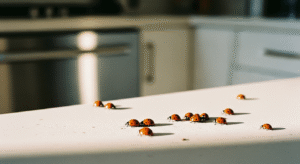Effective Ant Control: DIY vs. Professional for Long-Term Success
Ant infestations disrupt the comfort and safety of your home. Homeowners often weigh the benefits of DIY ant control methods versus professional exterminators. This article compares both approaches in terms of cost, effectiveness, safety, and long-term value, helping urban pest control experts guide you in making an informed decision for a lasting, ant-free environment.
Understanding the Core Differences Between DIY Ant Control and Professional Extermination Services
Defining DIY Ant Control Approaches and Common Methods
DIY ant control typically involves using over-the-counter insecticides, baits, and natural remedies. Products such as diatomaceous earth, boric acid, and sugar-based bait stations are applied by homeowners following package instructions or online guidance. However, these treatments often target only the visible ants instead of the hidden colony and queen, which can lead to temporary relief rather than complete eradication.
Defining Professional Ant Extermination Services and Their Scope
Professional ant exterminators are certified technicians who accurately identify ant species and locate hidden nests. They use advanced inspection techniques and professional-grade chemicals not accessible to the public. Their comprehensive approach treats both visible and hidden ants, including the queen, and includes follow-up visits to prevent reinfestation, offering a long-term solution.
Initial Cost Outlays DIY Versus Professional Ant Management
DIY methods are initially more affordable, typically costing $10–$30 per treatment module. However, repeated attempts with different products may be necessary. In contrast, professional services charge a higher upfront fee—usually $150 to $500—but include thorough inspections, specialized treatments, and follow-up visits to ensure effective eradication.
Time Investment and Effort Required for Each Approach
DIY ant control requires continuous monitoring and repeated application, which can be time-consuming and stressful. Professional exterminators perform intensive, targeted treatments in a single visit, followed by evaluations that free homeowners from ongoing labor and allow for a quicker reduction in infestation.
Knowledge and Expertise Needed for Effective Ant Species Identification
Successful ant control depends on accurate species identification. DIY methods can fall short by relying on generic treatments that do not address species-specific behavior. Professionals, however, use their expertise—often employing bait tests or microscopic analysis—to tailor treatments to the specific ant species, ensuring a more effective solution.
Evaluating the Effectiveness of DIY Ant Control for Long-Term Success
Short-Term Relief Versus Lasting Eradication With DIY Products
DIY products can provide immediate relief by killing visible ants; however, they rarely address the root of the infestation. While studies indicate that such methods may reduce ant activity by up to 50% shortly after application, the effect often diminishes within weeks as the queen remains unaffected, allowing the colony to rebound.
Common Pitfalls of DIY Methods Failing to Eliminate the Colony
DIY applications may miss critical entry points or be misapplied, allowing hidden colonies to survive and eventually repopulate the area. Repeated, improper use can even lead to chemical resistance. Without targeting the queen and nest, the infestation is likely to return—often more robustly.
Risks of Misidentifying Ant Species and Using Ineffective Treatments
Using products designed for one species on another can worsen the infestation. Treatments effective against pavement ants, for example, may not work on fire ants or carpenter ants. Such missteps result from knowledge gaps and leave many ants unaffected, giving the colony room to recover.
Potential for Infestations to Worsen With Improper DIY Techniques
Overapplication of DIY products can drive ants into hidden wall voids or other hard-to-reach areas, exacerbating the problem. Additionally, failing to remove food sources and moisture can create favorable conditions for the ants, leading to larger infestations over time.
When DIY Ant Control Might Suffice for Minor Issues
For very small or newly emerging infestations—such as occasional foraging on kitchen counters—DIY treatments can sometimes be enough. However, success in these cases depends on rapid identification, immediate treatment, and diligent monitoring.
Effective Ant Control: DIY vs. Professional Approach
Comprehensive Inspections to Identify Ant Species and Nest Locations by Professionals
Professional exterminators start with thorough inspections to pinpoint the ant species and locate nests using detailed mapping and advanced tools. This precise diagnosis allows them to design a treatment plan that addresses the source of the infestation rather than just its symptoms.
Professionals Utilize Tailored Treatment Plans for Specific Ant Types
Once the ant species is identified, professionals develop a customized treatment plan. This often involves a mix of chemical applications, baiting systems, and physical methods such as sealing entry points. For instance, fire ant treatments might include specialized baits aimed at eliminating the queen, while carpenter ants require targeted insecticides along structural areas.
Access to and Application of Professional-Grade Products and Equipment
Professional-grade products and equipment, which are restricted to licensed applicators, are typically more potent and effective than store-bought alternatives. Precision in application minimizes risks to homeowners and pets, enhancing overall treatment efficacy.
Focus on Eliminating the Entire Ant Colony Including the Queen
Eliminating the queen is crucial to stopping colony growth. Professionals deploy treatments deep within nests to reach the queen, effectively interrupting the colony’s lifecycle and reducing the likelihood of reinfestation when compared to surface-level DIY approaches.
Professional Strategies for Preventing Future Ant Infestations
In addition to active treatment, professionals emphasize long-term prevention. They often recommend maintenance treatments, sealing structural entry points, and modifying environmental factors such as food and water sources. Many service providers also offer guaranteed follow-up visits, securing a prolonged ant-free environment.
Comparing Safety and Environmental Impacts of DIY and Professional Ant Solutions
Potential Health Risks Associated With Homeowner Application of Chemicals
DIY products can present significant health risks if not handled properly. Without proper safety gear, homeowners may expose themselves to harmful chemicals, increasing the risk of skin irritation, respiratory issues, or accidental poisoning. Improper disposal further elevates these dangers.
Safe Handling and Application of Treatments by Trained Professionals
Professional exterminators follow strict protocols when handling and applying potent chemicals. Their training and use of calibrated equipment and protective gear ensure that treatments are safe for both residents and the environment while maximizing effectiveness.
Environmental Considerations for Store-Bought Sprays and Baits
DIY treatments often involve indiscriminate chemical application, which can harm beneficial insects and negatively impact soil and water quality. In contrast, professionals use targeted applications that minimize environmental contamination and support eco-friendly pest management practices.
Eco-Friendly Options and Integrated Pest Management (IPM) Offered by Professionals
Many pest control companies now incorporate Integrated Pest Management (IPM) strategies. These methods emphasize ecological balance by reducing chemical use and incorporating biological agents, physical barriers, and ongoing monitoring to maintain effective pest control with minimal environmental impact.
Protecting Pets and Children During Ant Control Treatments
Safety for vulnerable groups such as children and pets is a top priority. Professional treatments are often certified for residential use, scheduled to minimize exposure, and accompanied by detailed precautionary advice, ensuring households remain safe during and after treatment.
Analyzing Cost-Effectiveness Beyond Initial Spending for Ant Management
The True Cost of Repeated DIY Ant Treatments Over Time
Though DIY treatments begin with a lower price tag, repeated applications and replacement of ineffective products can quickly add up. Additionally, persistent infestations may lead to undiscovered property damage, making DIY approaches less economically attractive over time.
Professional Service Fees and What They Typically Include
Professional extermination fees typically cover comprehensive inspections, specialized product applications, and follow-up visits. While the upfront cost is higher, the one-time investment often proves more cost-effective in the long run by preventing recurring infestations.
Value of Guarantees and Follow-Up Visits From Professional Services
Many professional companies offer guarantees and scheduled follow-ups, which reduce the risk of reinfestation. This ongoing support can prevent future problems and minimize the need for additional treatments, making professional services a wise long-term investment.
Potential for Costly Property Damage From Uncontrolled Ant Infestations
Ant infestations, particularly those involving carpenter ants, can cause significant damage to wooden structures. The repair costs from such damage can far exceed the expense of professional extermination, making proactive and effective treatment a sensible financial decision.
Long-Term Financial Benefits of Effective Professional Ant Extermination
Professional treatments provide long-term savings by eliminating the infestation completely, reducing maintenance time and potential damage repairs. This approach ultimately lowers costs compared to continuous DIY applications that offer only temporary solutions.
Making an Informed Decision for Lasting Ant-Free Results in Your Home
Assessing the Severity and Type of Your Ant Infestation
Begin by carefully assessing the size and type of your infestation. Minor, seasonal issues might be managed with DIY methods, while larger or persistent infestations typically require professional intervention to ensure complete eradication.
Weighing the Pros and Cons Based on Your Specific Situation
Homeowners must consider factors such as initial cost, time commitment, safety, and long-term effectiveness when deciding between DIY and professional treatments. While DIY methods offer immediate affordability, they may ultimately lead to recurring infestations, whereas professionals provide a more durable solution.
When to Persist With DIY Ant Control Versus Calling a Professional
For localized or minor infestations, DIY methods can suffice provided there is diligent monitoring and treatment. However, if ant activity persists, spreads, or causes even minor structural issues, professional intervention becomes necessary.
Recognizing Signs That Professional Ant Extermination Is Necessary
Indicators for switching to professional treatment include uncontrollable infestations, visible ant trails, frequent sightings, or signs of structural damage. If repeated DIY efforts fail, these are clear signals that a professional assessment is needed.
Achieving Sustainable Ant Prevention for a Pest-Free Home
Long-term prevention requires more than immediate treatment. Implementing regular professional inspections, sealing entry points, and maintaining proper sanitation will help ensure that once controlled, the infestation does not return.
Frequently Asked Questions
Q: How do DIY ant control methods compare to professional treatments in terms of effectiveness? A: DIY methods offer temporary relief, while professionals provide targeted treatments that eliminate the entire colony, including the queen, for longer-lasting results.
Q: What safety concerns should be considered when using DIY ant control products? A: Improper use of DIY chemicals may expose homeowners to harmful substances. Professionals follow safety protocols and use protective gear to minimize risks.
Q: Are the upfront costs of professional ant extermination justified over time? A: Yes, professional treatments often include guarantees and follow-up visits that prevent recurring infestations, making them more cost-effective in the long run.
Q: When is it advisable to switch from DIY methods to professional ant control? A: Persistent infestations, signs of nesting, or structural damage indicate that professional intervention is needed for an effective, long-term solution.
Q: Can professional ant control methods protect against future infestations? A: Yes, professionals not only eliminate current ant populations but also employ preventive measures like sealing entry points and regular inspections.
Final Thoughts
Professional ant control offers a more comprehensive and enduring solution than DIY methods. Although DIY solutions may seem attractive due to lower initial costs, their inability to eliminate hidden colonies and the queen can result in recurring infestations and extra expenses. In contrast, professional exterminators use advanced techniques and targeted treatments to ensure your home remains ant-free in the long term. Homeowners should assess their specific needs, considering both the severity of the infestation and long-term safety, to choose the most effective ant-control solution.



